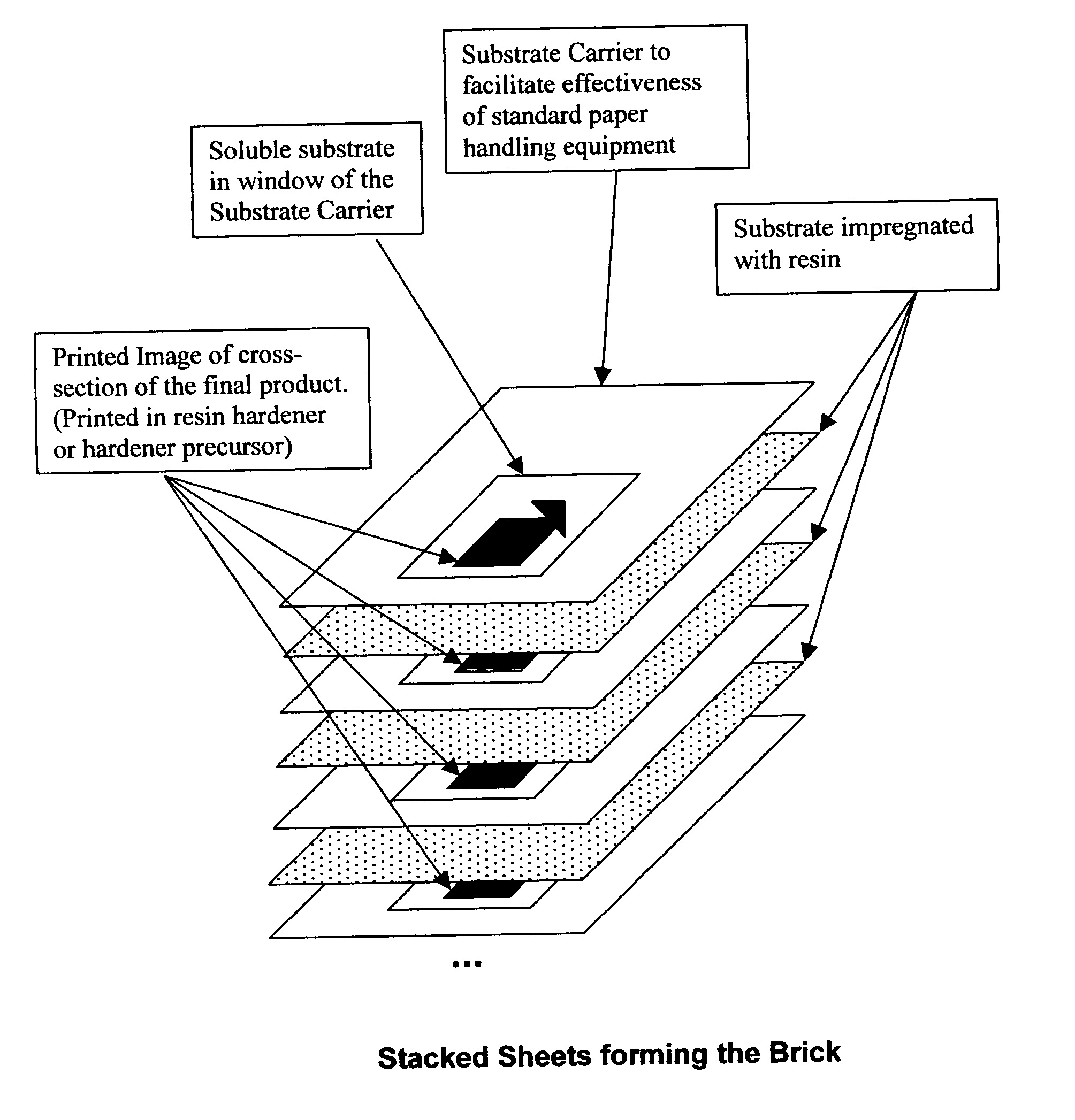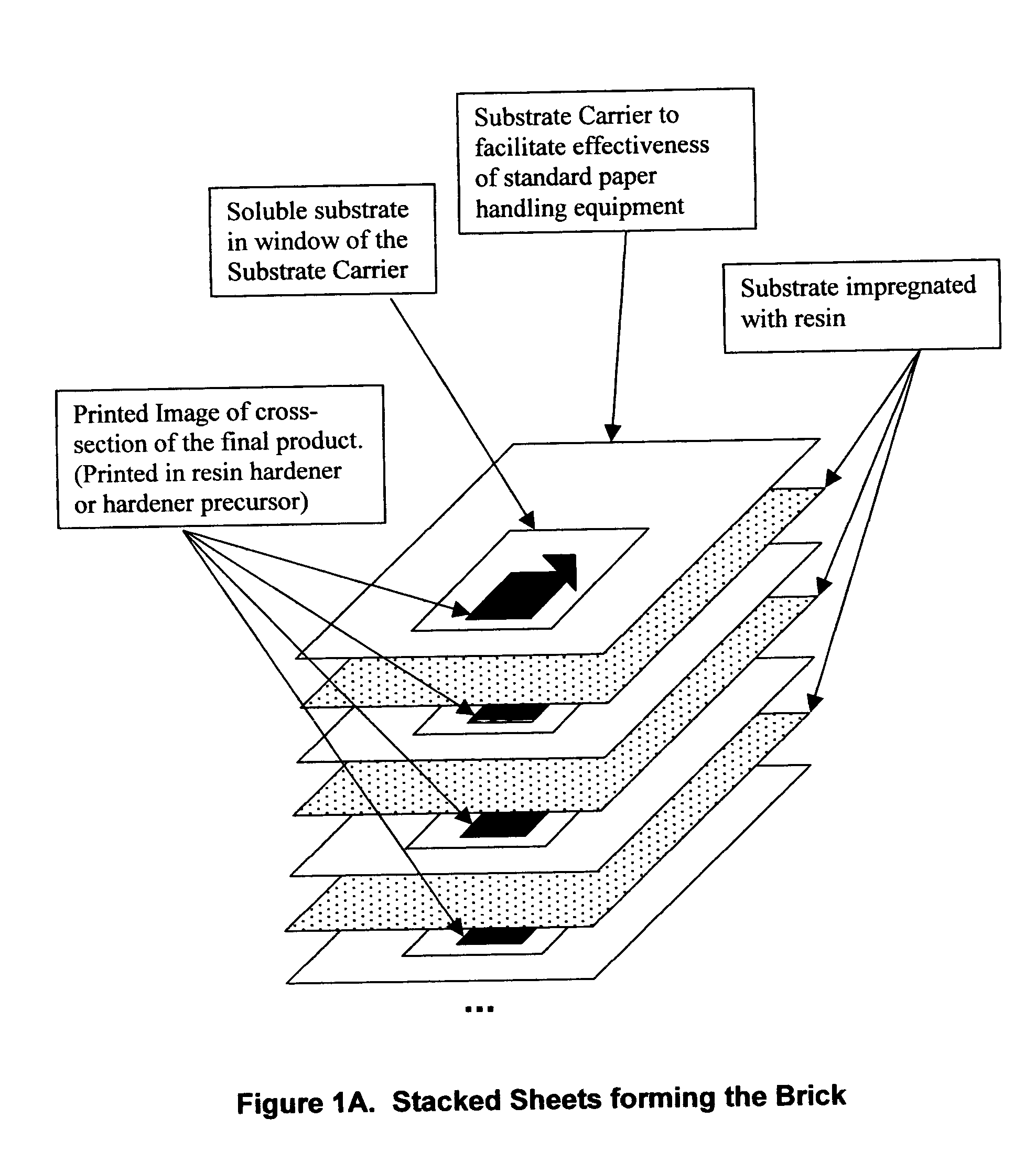Three dimensional printing from two dimensional printing devices
- Summary
- Abstract
- Description
- Claims
- Application Information
AI Technical Summary
Benefits of technology
Problems solved by technology
Method used
Image
Examples
Embodiment Construction
[0023] 8.1 Preferred Embodiment
[0024] The simplest implementation of this method is to use an inkjet printer to apply resin-hardener to the areas intended to create the resultant Product to many separate sheets of water-soluble paper. Care must be taken to ensure that the resin will not significantly weaken the water-soluble paper. For the purposes of demonstration, Dissolvo.TM. D60S paper, Evercoat.TM. Fiberglass Resin and its hardener, and an HP.TM. 656cvr or Lexmark.TM. Z23le were chosen and used. The separate layers are subsequently stacked and other sheets of substrate that have been impregnated with fiberglass resin are inserted between each printed sheet. The resultant mass of paper, resin, and hardened resin, the Brick, contains the desired 3D Product. Said Brick is then submersed in water and then agitated by brushing, rubbing, and a mild pressure spray of solvent to erode the negative portions of the Brick, leaving behind the hardened resin in the shape of the desired Prod...
PUM
| Property | Measurement | Unit |
|---|---|---|
| Current | aaaaa | aaaaa |
| Pressure | aaaaa | aaaaa |
| Color | aaaaa | aaaaa |
Abstract
Description
Claims
Application Information
 Login to View More
Login to View More - R&D
- Intellectual Property
- Life Sciences
- Materials
- Tech Scout
- Unparalleled Data Quality
- Higher Quality Content
- 60% Fewer Hallucinations
Browse by: Latest US Patents, China's latest patents, Technical Efficacy Thesaurus, Application Domain, Technology Topic, Popular Technical Reports.
© 2025 PatSnap. All rights reserved.Legal|Privacy policy|Modern Slavery Act Transparency Statement|Sitemap|About US| Contact US: help@patsnap.com


